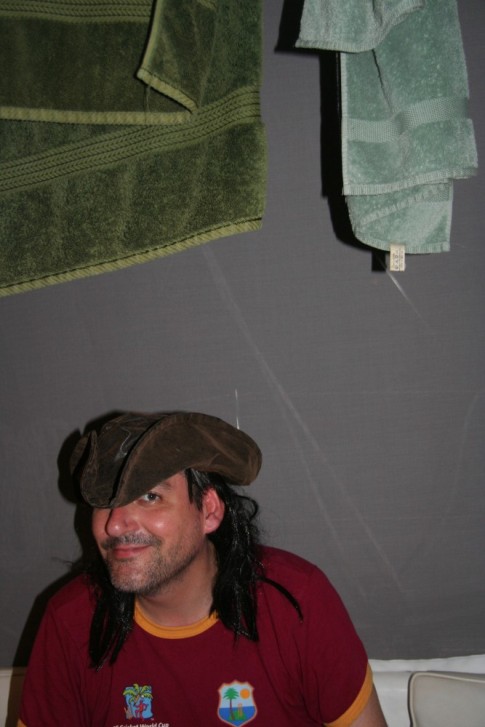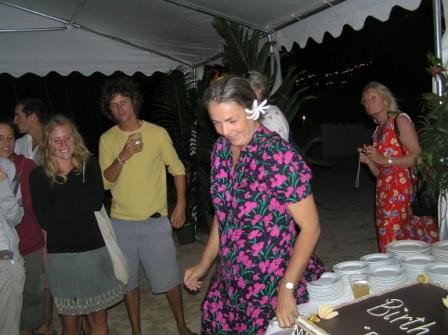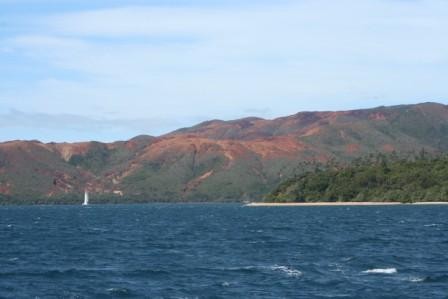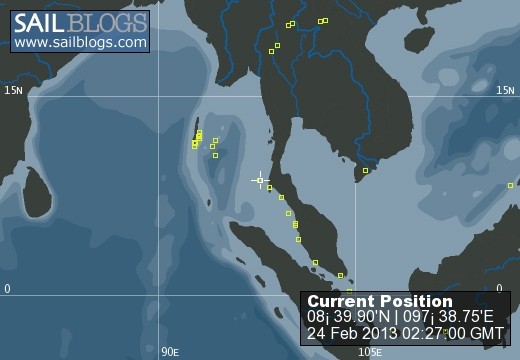
Around the World
23 February 2013 | Similan Islands Thailand
21 February 2013 | Bay of Bengal
15 February 2013 | Cinque Islands
15 February 2013 | Henry Lawrence Island
12 February 2013 | North Button Island
10 February 2013 | Henry Lawrence Island
09 February 2013 | Havelock Island
06 February 2013 | Neil Island
04 February 2013 | Rutland Island
01 February 2013 | Andaman Sea
30 January 2013 | Port Blair
26 January 2013 | Andaman Sea
26 January 2013 | Andaman Sea
03 December 2012 | Burma
02 December 2012
08 November 2012
08 November 2012 | Thailand
08 November 2012
10 June 2012 | Rebak Marina Langkawi
06 February 2012 | Malaysia
Plain of Jars
19 January 2012 | Laos
michael and jackie
The Plain of Jars has the unenviable reputation of being the most bombed place on earth. It is also one of the more difficult places to reach. The road out of Luang Prabang South climbs up through the mountains hairpin after hairpin. Up till a few years ago highway 13 was known for bandit raids. The tortuous road makes it obvious why. The road was originally built by the French in the 1940, and then again by the Americans in the early 1960s. More recently the Vietnamese asphalted the road. Heavy track and lack of repair have eked their toll. Highway 13 simply links lots of villages. Typically the villages cling to the ridges of the mountains and the highway simply links them altogether - an upgraded mule track. The new roads will just link the cities. After about four or five hours we arrive at the junction town of Phou Khoun. Everyone stops here the big trucks and the tour buses. The dusty town looks like a truck stop. A large sign indicates South for Vientiane and East for the Plain of Jars. We stop for noodle soup. Noodle soup is ubiquitous and refreshing. We also took a stroll around the market.

This market sells everything even roasted rats! The rat in the picture is dead.

The road is less busy now but it still snakes through the hilltop villages. All along the road women and children dry long grass to make brushes. This involves whacking the grass on the roadside and then diving for cover when a truck comes past.


These one storey huts built along the ridges are the homes of Hmong tribesmen. They ended up on the wrong side in the Indo Chinese wars, supporting the US and the Royalist forces. Fighting continued right through into the 1990s and there are even now some areas where the army prohibits tourism on account of insurgency. One of these areas has many jars, our guide claimed that the army used it to illegally log and kill game rather than fight guerillas. Issues still remain we found out when we saw two armed soldiers on a motorbike going to "guard a village against enemies"
Eventually the road drops down into less mountainous terrain. The land is still hilly but more undulating. Areas of land are fenced and there are cattle grazing. The hills and mountains that surround the area are deforested whether this is by logging or bombing is not clear. Probably the answer is both.
Our destination Phonsavanh was totally wiped out in the war. It has been completely rebuilt but still has the air of a frontier town. Our hotel costing $25 a room was surprisingly comfortable and made a good base to visit the jars. You have to use a registered guide, our guide a Hmong took us to two of the main sites. The jars are large stone urns perched uneasily amongst bomb craters.



Paths are marked to indicate safe areas. Many of the bombs were cluster bombs which exploded a second time when locals tried to salvage the metal from the bomb casings. Farmers have to have permission from the governor before they can work new fields in case there is unexploded ordnance. it's very difficult to see how this impoverished part of Indo China could have assumed so much importance to the US military. It's closeness to Vietnam was its undoing. Pathet Lao caves and trenches are cheek by jowl alongside the jars. Here is Anne inside one of the caves.

In Phonsavanh to our surprise we found a restaurant serving pizza run by a young man from the Shetland Isles, and also one of the best noodle soups yet. Fresh green leaves floated in a noodle soup from one of the least prepossessing places we have eaten in. One of the delights of Lau cuisine which is truly excellent is lau lau. Local villagers are allowed to distill and sell this spirit. A glass sells for about 30p cheaper than beer. On the return from the Jars our guide showed us the "factory".

The spirit is made from sticky rice which is fermented. The resulted brew is heated in metal containers and the alcohol simply condenses off the lid and into the bottles. Makes a great finish to a meal.
Even in Phonsavanh you can see change coming rapidly. New hotels are being thrown up by Vietnamese business people. Buses of immigrants come South from Vietnam, whilst trucks carrying digging equipment are ever present. A new road is being built to Vientiane which will reduce the journey time from 12 hours to 8.
This market sells everything even roasted rats! The rat in the picture is dead.
The road is less busy now but it still snakes through the hilltop villages. All along the road women and children dry long grass to make brushes. This involves whacking the grass on the roadside and then diving for cover when a truck comes past.
These one storey huts built along the ridges are the homes of Hmong tribesmen. They ended up on the wrong side in the Indo Chinese wars, supporting the US and the Royalist forces. Fighting continued right through into the 1990s and there are even now some areas where the army prohibits tourism on account of insurgency. One of these areas has many jars, our guide claimed that the army used it to illegally log and kill game rather than fight guerillas. Issues still remain we found out when we saw two armed soldiers on a motorbike going to "guard a village against enemies"
Eventually the road drops down into less mountainous terrain. The land is still hilly but more undulating. Areas of land are fenced and there are cattle grazing. The hills and mountains that surround the area are deforested whether this is by logging or bombing is not clear. Probably the answer is both.
Our destination Phonsavanh was totally wiped out in the war. It has been completely rebuilt but still has the air of a frontier town. Our hotel costing $25 a room was surprisingly comfortable and made a good base to visit the jars. You have to use a registered guide, our guide a Hmong took us to two of the main sites. The jars are large stone urns perched uneasily amongst bomb craters.
Paths are marked to indicate safe areas. Many of the bombs were cluster bombs which exploded a second time when locals tried to salvage the metal from the bomb casings. Farmers have to have permission from the governor before they can work new fields in case there is unexploded ordnance. it's very difficult to see how this impoverished part of Indo China could have assumed so much importance to the US military. It's closeness to Vietnam was its undoing. Pathet Lao caves and trenches are cheek by jowl alongside the jars. Here is Anne inside one of the caves.
In Phonsavanh to our surprise we found a restaurant serving pizza run by a young man from the Shetland Isles, and also one of the best noodle soups yet. Fresh green leaves floated in a noodle soup from one of the least prepossessing places we have eaten in. One of the delights of Lau cuisine which is truly excellent is lau lau. Local villagers are allowed to distill and sell this spirit. A glass sells for about 30p cheaper than beer. On the return from the Jars our guide showed us the "factory".
The spirit is made from sticky rice which is fermented. The resulted brew is heated in metal containers and the alcohol simply condenses off the lid and into the bottles. Makes a great finish to a meal.
Even in Phonsavanh you can see change coming rapidly. New hotels are being thrown up by Vietnamese business people. Buses of immigrants come South from Vietnam, whilst trucks carrying digging equipment are ever present. A new road is being built to Vientiane which will reduce the journey time from 12 hours to 8.
Comments
| Vessel Name: | Lady Kay |
| Vessel Make/Model: | Lagoon 380 |
| Hailing Port: | Falmouth |
| Crew: | Michael & Jackie Chapman |
Blue Waters
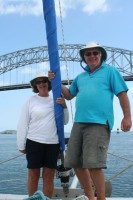
Who: Michael & Jackie Chapman
Port: Falmouth

